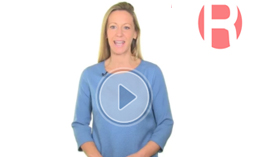ADHD in Children

Signs of ADHD
Children who have ADHD (Attention Deficit/Hyperactivity Disorder) have some or all of these symptoms:
- Doesn't finish tasks
- Doesn't listen to adults
- Gets distracted easily
- Fidgets/squirms
- Has a short temper/gets upset easily
- Having difficulty with playing quietly
- Interrupts others
- Intrudes on others
- Runs or climbs at inappropriate times
- Seldom seems to sit still; but are constantly in motion
- Talks excessively
Some of these behaviors are normal, developmentally appropriate behaviors for children, depending on their age. Children five years of age and younger are rarely diagnosed with ADHD. Many of these behaviors are typical and age appropriate.
The 3 Types of ADHD
ADHD is diagnosed into three sub-types. Not all children who have ADHD will have the exact same behaviors. The three types are:
- Inattentive Type
- Hyperactive Type
- Combination Inattentive / Hyperactive / Impulsive Type
The third is the most common type of ADHD. Most children with this condition show a combination of all of these behaviors. Note that the inattentive symptoms may not appear when the child is genuinely interested in something. They may be able to pay attention for hours at a time to something that interests them. However, they may be unable to pay attention to something that is repetitive or doesn't interest them.
Diagnosing ADHD in Children
There is no one simple test for ADHD. Health care providers can use the American Academy of Pediatrics guidelines to look for some of the signs of ADHD. A diagnosis can then be made based on the child's behavior over a six month period or longer, in two or more specific settings, using behavior assessments from the child's school, family, and other caregivers. Health care providers sometimes perform brain scans as part of the diagnostic procedures.
In order to diagnose a child as having ADHD, health care providers must sometimes rule out other mental health conditions such as anxiety, bipolar disorder, conduct disorder, depression, learning disabilities, neurological conditions, organic brain dysfunction, sleep disorders, undetected seizures, or emotional behaviors due to changes in the child's life such as move or a divorce.
Treating ADHD in Children
Treatment options for children with ADHD include behavioral therapy and medications. Behavioral therapy can take place in different settings, including the child's school. This may work best for some children when combined with medications. Several different medications are used in the treatment of ADHD. Most of them are stimulants that, paradoxically, help the child to learn to concentrate and play/work quietly.
Medications may have side effects that include sleep problems and stomach irritations. The child's physician may have to adjust the medication more than once to find the most effective medicine with the least side effects.
Top 5 Routes for "ADHD in Children"
- WebMD This medical website lists the symptoms and possible treatments for children with ADHD.
- HelpGuide.org This guide to mental and emotional health topic has a list of myths and facts about ADHD in children.
- Additude This page offers 12 tips for parents of children with ADHD.
- HealthLine This site has a checklist of behaviors in toddlers that could potentially be signs of ADHD.
- Child Development Institute, Inc. This site explains some of the treatment options for children with ADHD.
Similar Routes
- Free Coloring Pictures
- What Are Assisted Living Facilities?
- Estate Planning
- Baby Formula
- ADHD in Children
What is a Route?

A route is a gateway to learning. Routes.com's mission is to go beyond search results by curating summaries and top "routes" for today's most popular subjects. Learn More
Suggest a Route
Are we missing a subject you think should be given a route? Suggest a new route. Learn More
Contribute
Become a routes.com contributor. Submit your route today! Learn More
Other Routes Like This
Hobbies for Teens
Hobbies can often alllow a teenager to feel much happier in their lives. These hobbies aren't just enjoyable, but provide new skills and interaction with new people. Hobbies often help teends find wher their true passions in life may be. There are of course many different hobbies that can be chosen. Some of these include music, sports, arts, computers, building, photography, reading, animal care and so many more! Teenagers that partake in individual and group hobbies can feel better about themselves and explore their interest in safe and exciting ways. Hobbies can also prevent teenagers from feeling bored or keep them entertained. Keep reading to...
The Troubles of Teen Bullying
Bullying is a problem that many of teenagers go through. Young people can be picked on based on their physical appearance, sexual orientation, or social status. The bullying can take different forms from physical attacks like shoving and punching; to psychological and verbal attacks which include cyberbullying. Sometimes adults may not notice the bullying and where they do; they may not realize the impact it has on the victims. Bullying has physical and psychological implications on both the victims and perpetrators. Depression and anxiety Experts say that bullying results in an increased risk of depression and need for psychiatric treatment...
Baby Formula
Babies are sweet little bundles of joy, and new parents want to ensure their baby is cared for properly. In addition to love and snuggles, babies need formula. With different needs and certain allergies, the baby formula market is vast. There is a formula for every baby. Parents may be feeling a little overwhelmed by the amount of baby formula that is currently on the market, but do not worry, as there are some key factors to keep in mind when picking out the best formula for your baby. There are three types of baby formula. The three main styles are cow's milk, soy milk and specialty ingredients. Additionally, each style is offered in a powder mix, a liquid concentration...


